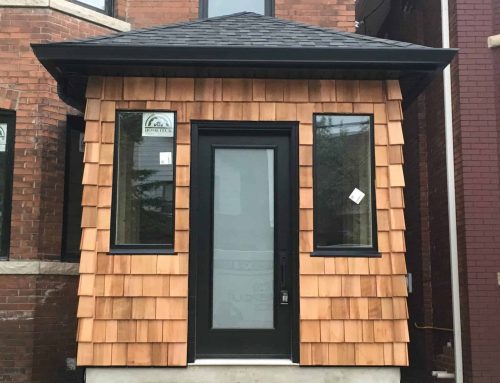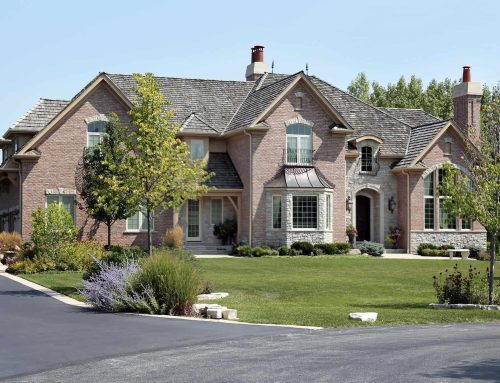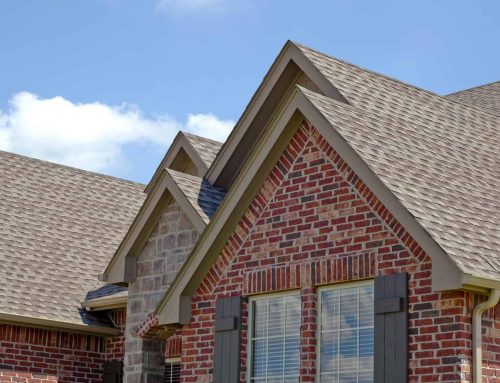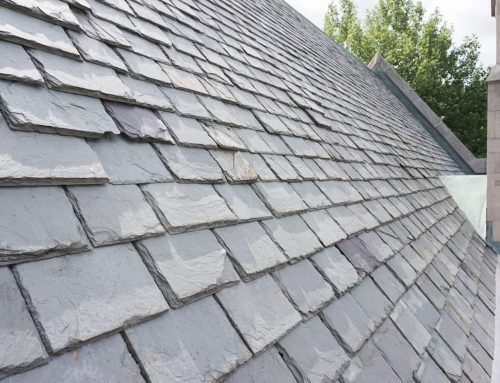Discovering roof damage on your home can be a stressful experience. Whether it’s missing shingles after a windstorm, water stains on your ceiling, or visible damage from fallen tree branches, the immediate concern is often financial: will insurance cover this? Understanding the roof replacement insurance process can mean the difference between a smooth claim experience and a frustrating battle with your insurance provider. Knowing when insurance will cover roof replacement, how to properly document damage, and what steps to take can save you thousands of dollars and countless hours of stress. For Toronto homeowners facing the reality of roof damage, navigating the insurance claim process doesn’t have to be overwhelming when you understand how the system works.
When Does Insurance Cover Roof Replacement in Canada?
Understanding what your home insurance policy covers—and doesn’t cover—is the critical first step in the roof replacement insurance process. In Canada, insurance coverage for roof replacement typically falls into two categories: covered perils and exclusions. The distinction between these can determine whether you’re facing a full insurance payout or an out-of-pocket expense.
Covered Perils and Sudden Events
Canadian home insurance policies generally cover roof damage caused by sudden, accidental events. This includes damage from severe weather events that are common in the Greater Toronto Area, such as windstorms, hail, ice storms, and heavy snowfall that exceeds the roof’s structural capacity. If a tree falls on your roof during a storm, or if high winds tear off shingles during one of Toronto’s notorious spring or fall wind events, these scenarios typically qualify for coverage.
Lightning strikes, fire damage, and vandalism are also usually covered under standard policies. The key factor is that the damage must be sudden and accidental—something you couldn’t have prevented through regular maintenance. For example, if a severe hailstorm damages your roof, causing multiple punctures or cracks in shingles, your insurance will likely cover the necessary repairs or replacement.
Toronto’s climate presents specific challenges that often result in insurance claims. Ice damming, which occurs when snow melts and refreezes at roof edges, can cause significant damage to shingles, gutters, and even interior ceilings. If ice dam damage occurs despite proper maintenance and adequate attic ventilation, it may be covered by your policy, though this can be a grey area depending on your specific coverage.
Common Exclusions
Not all roof damage qualifies for insurance coverage, and understanding these exclusions can prevent disappointment when filing a claim. Wear and tear from age is the most significant exclusion. If your roof has simply reached the end of its natural lifespan—typically 15-25 years for asphalt shingles common in Toronto homes—insurance will not cover replacement costs. Insurers expect homeowners to maintain their roofs and replace them as needed through normal maintenance budgets.
Damage resulting from lack of maintenance is another major exclusion. If missing shingles weren’t replaced promptly, allowing water infiltration over time, or if clogged gutters led to ice dam formation, insurance companies may deny your claim. This is why regular roof inspections and maintenance are crucial for Toronto homeowners—they protect both your home and your insurance coverage eligibility.
Most policies also exclude gradual damage, such as slow leaks that developed over months or years, moss or algae damage from neglect, and damage from animals or pests if the infestation could have been prevented. Additionally, cosmetic damage that doesn’t affect the roof’s function—such as minor discoloration or slight curling that doesn’t compromise water protection—typically isn’t covered.
Age and Maintenance Factors
Insurance companies increasingly scrutinize roof age when processing claims. Many insurers in Ontario have age restrictions or reduced coverage for older roofs. Some policies switch from replacement cost coverage to actual cash value coverage once a roof reaches 15-20 years old, meaning you’ll receive significantly less money for replacement. Others may require proof of regular maintenance or even pre-claim inspections for older roofs.
For Toronto homeowners, this means documentation is essential. Keep records of all roof maintenance, repairs, and inspections. Photographs dated throughout your homeownership can prove your roof’s condition prior to damage events. This documentation becomes invaluable when an adjuster questions whether damage is from a recent storm or long-term deterioration.
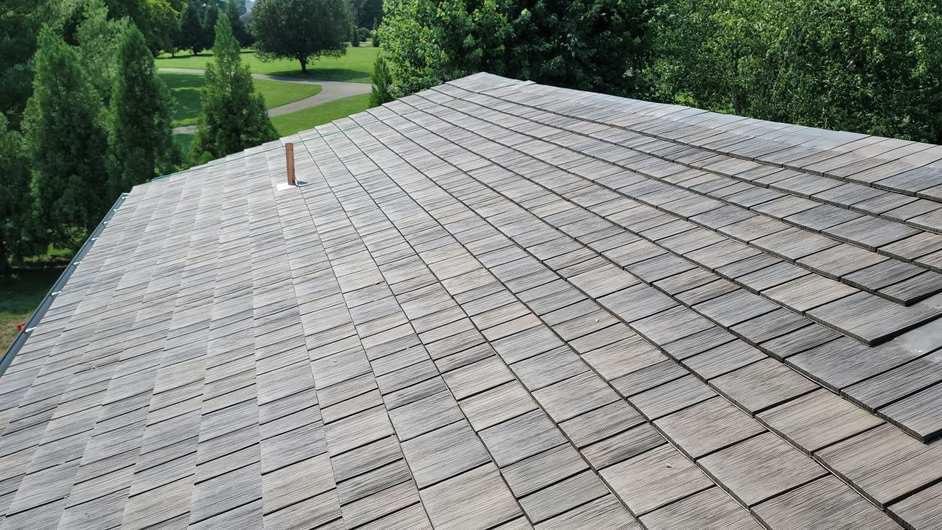
Understanding Your Home Insurance Policy
Before damage occurs, it’s crucial to understand exactly what your home insurance policy covers regarding roof replacement. Not all policies are created equal, and the differences can significantly impact your out-of-pocket costs when you need a roof replacement contractor.
Replacement Cost vs. Actual Cash Value
Canadian home insurance policies typically offer two types of coverage for roofs: replacement cost and actual cash value (ACV). Understanding the difference is critical for Toronto homeowners evaluating their coverage.
Replacement cost coverage pays to replace your damaged roof with a new roof of similar kind and quality, without deducting for depreciation. If your roof replacement costs $15,000, the insurance company pays $15,000 (minus your deductible). This is the most comprehensive coverage and highly recommended, especially given Toronto’s harsh weather conditions that can shorten roof lifespans.
Actual cash value coverage, by contrast, factors in depreciation. If your 15-year-old roof had an expected 20-year lifespan, the insurer might determine it was 75% depreciated and pay only 25% of the replacement cost. Using the same $15,000 example, you might receive only $3,750 (plus you’d still pay your deductible). For GTA homeowners, this difference can mean thousands of dollars out of pocket.
Deductibles and Policy Limits
Your insurance deductible directly impacts the financial aspect of roof replacement. Most Toronto homeowners carry deductibles ranging from $500 to $2,500, though higher deductibles can reduce premium costs. Understanding your deductible before filing a claim is important—if repair costs are only slightly higher than your deductible, filing a claim may not be worthwhile given potential premium increases.
Some policies have special wind or hail deductibles that are higher than standard deductibles or calculated as a percentage of your home’s insured value (typically 1-5%). This is particularly relevant in the GTA, where wind and hail are common causes of roof damage. A 2% deductible on a home insured for $500,000 means you’d pay the first $10,000 of any wind or hail damage claim—a significant out-of-pocket expense.
Policy limits also matter. Ensure your coverage limits are sufficient to cover full roof replacement at current Toronto construction costs, which have increased significantly in recent years. Inadequate limits could leave you underinsured when you need coverage most.
The Roof Replacement Insurance Claim Process
Filing an insurance claim for roof replacement involves multiple steps, and following the proper process can significantly improve your chances of a successful claim. Here’s what Toronto homeowners should expect when navigating the insurance claim process.
Initial Damage Assessment and Documentation
The moment you discover roof damage, begin documenting everything. Take comprehensive photographs and videos from multiple angles, both from ground level and, if safely accessible, from the roof itself. Capture close-up shots of damaged shingles, missing materials, or any visible penetration points. Document interior damage as well—water stains on ceilings, damaged insulation, or any signs of water infiltration.
Record the date and circumstances of the damage. If damage occurred during a specific storm, note the date, time, and weather conditions. Environment Canada weather records for Toronto can corroborate your claim if the adjuster questions whether conditions were severe enough to cause damage. This detailed documentation becomes your evidence when presenting your claim.
Take temporary measures to prevent further damage, such as covering exposed areas with tarps, but document the damage before making temporary repairs. Most insurance policies require policyholders to mitigate additional damage, but premature repairs without documentation can complicate claims.
Contacting Your Insurance Company
Contact your insurance company as soon as possible after discovering damage. Most insurers have 24/7 claims hotlines. Provide basic information about the damage and circumstances, and ask about your next steps. The insurer will assign a claims adjuster and provide a claim number—keep this number handy for all future communications.
Ask specific questions during this initial call: What’s the timeline for adjuster inspection? What documentation do they need? Does your policy allow you to get independent contractor estimates? What’s your deductible amount? Understanding these details upfront streamlines the process.
Working with the Insurance Adjuster
The insurance adjuster will schedule an inspection of your roof, typically within a few days to a week of filing your claim. The adjuster’s role is to assess the damage, determine its cause, and evaluate whether it’s covered under your policy. They’ll also estimate repair or replacement costs based on their assessment.
Consider having a professional roofing contractor present during the adjuster’s inspection. A qualified Toronto roofing contractor can identify all damage that might not be immediately visible to someone unfamiliar with roofing systems. They can point out issues like compromised underlayment, damaged flashing, or structural concerns that an adjuster might miss. This isn’t adversarial—it’s about ensuring all damage is properly documented and covered.
After the inspection, the adjuster will provide a written estimate and determination of coverage. Review this carefully. If you disagree with the assessment, you have the right to challenge it. Many homeowners successfully appeal initial denials or low estimates by providing additional documentation or expert opinions from qualified contractors.
Timeline and Expectations
The insurance claim process timeline varies depending on claim complexity and insurer responsiveness. Simple claims for obvious storm damage might be resolved within 2-4 weeks. More complex claims, particularly those involving disputes about coverage or repair scope, can take several months.
During winter months in Toronto, weather can delay inspections and repairs. Insurers understand this and typically work with homeowners on temporary solutions while permanent repairs wait for suitable weather conditions. However, document all communications and keep detailed records of any temporary measures and associated costs.
Working with a Roofing Contractor During the Claims Process
Choosing the right roofing contractor is crucial to a successful insurance claim experience. The contractor you select will play a significant role in documenting damage, providing accurate estimates, and ensuring quality repairs or replacement.
Getting Professional Assessments
Before or immediately after contacting your insurance company, consider having a reputable roofing contractor inspect your roof. Many established Toronto contractors offer free damage assessments. This inspection serves multiple purposes: it confirms whether you have legitimate insurance-worthy damage, provides an independent assessment of repair costs, and gives you an expert opinion to compare against the insurance adjuster’s findings.
Choose a contractor experienced with insurance claims. Ask about their experience working with insurance companies, their process for documenting damage, and whether they can provide detailed reports and photographic evidence. A contractor familiar with GTA insurance claim processes understands what documentation insurers require and how to present damage information effectively.
Be wary of contractors who offer to “handle everything” with your insurance company or who guarantee that insurance will cover all costs. While good contractors facilitate the process, ethical professionals don’t make promises about insurance coverage—they provide accurate information and let you make informed decisions.
Documentation and Estimates
Your roofing contractor should provide a detailed, itemized estimate that breaks down all materials, labor, and other costs associated with your roof replacement. This estimate should align with current Toronto-area construction costs and include all necessary components: new shingles, underlayment, ice and water shield, flashing, ventilation components, and disposal of old materials.
Quality contractors also document the full scope of damage through comprehensive reports with photographs, measurements, and technical descriptions. This documentation supports your insurance claim and provides evidence if disputes arise about coverage or repair scope.
Communication and Coordination
Your contractor should be willing to communicate with your insurance adjuster and provide additional information if requested. However, the relationship between you and your insurance company is separate from your relationship with the contractor. You’re responsible for your insurance claim, though your contractor can provide valuable support and expertise throughout the process.
Some Toronto roofing contractors offer insurance claim assistance services, helping you navigate paperwork, interpret policy language, and communicate effectively with adjusters. While this assistance can be valuable, ensure you understand what services are included and any associated costs.
Maximizing Your Insurance Claim Success
Successfully navigating the roof replacement insurance process requires attention to detail, proper documentation, and understanding of how to present your claim effectively. These strategies can improve your chances of a favorable outcome.
Thorough Documentation Practices
Create a comprehensive damage documentation package that includes timestamped photographs from multiple angles, written descriptions of damage, weather reports from the damage date, and any previous roof inspection reports showing the roof’s pre-damage condition. The more evidence you provide, the stronger your claim.
For Toronto homeowners, keeping a maintenance log for your roof proves you’ve been a responsible homeowner. Document regular gutter cleanings, previous minor repairs, annual inspections, and any professional assessments. This record demonstrates that damage resulted from a covered event rather than neglect.
Common Mistakes to Avoid
Several mistakes can jeopardize your insurance claim. Never admit fault or speculate about damage causes when speaking with your insurer—stick to facts. Don’t delay filing your claim; most policies have time limits, and delays can raise questions about when damage actually occurred. Avoid making permanent repairs before the adjuster’s inspection, as this eliminates evidence of the original damage extent.
Don’t accept the first offer without review if you believe it’s inadequate. You have the right to negotiate and provide additional evidence supporting higher repair costs. Many successful claims involve some back-and-forth negotiation between homeowner and insurer.
Be cautious about contractors who offer to waive your deductible or inflate claims to cover it. These practices are insurance fraud and can void your policy and result in criminal charges. Ethical Toronto roofing contractors will never suggest these approaches.
When to Seek Additional Help
If your claim is denied or the settlement offer seems unreasonably low, consider seeking additional expertise. A public insurance adjuster (different from the company adjuster) works for you, not the insurance company, and can reassess damage and negotiate on your behalf. While they charge a percentage of your settlement, their expertise can result in significantly higher payouts.
For complex disputes, particularly those involving significant amounts of money, consulting with an insurance lawyer familiar with Canadian property law may be worthwhile. Many lawyers offer free consultations and can advise whether you have grounds to challenge a denial or low settlement.
Navigate Your Roof Replacement Claim with Confidence
Understanding the roof replacement insurance process empowers Toronto homeowners to protect their interests when roof damage occurs. From knowing what coverage your policy provides to documenting damage properly and working effectively with adjusters and contractors, each step plays a crucial role in achieving a successful claim outcome.
The complexity of insurance policies, the technical nature of roofing systems, and the stress of dealing with damage can make the claim process feel overwhelming. However, with proper knowledge, thorough documentation, and the right professional support, most legitimate claims for storm or weather-related damage result in fair settlements that allow homeowners to restore their roofs to proper condition.
Remember that insurance is designed to protect you from unexpected catastrophic losses, not routine maintenance or wear and tear. Regular roof inspections and maintenance not only extend your roof’s lifespan but also ensure that when genuine damage occurs, your claim stands on solid ground.
If you’re facing roof damage in the Greater Toronto Area and need guidance on the insurance claim process, Ontario Downspout Service has decades of experience helping homeowners navigate these situations. Our team understands Toronto’s unique weather challenges and has worked with countless insurance adjusters on roof replacement projects throughout the GTA. We provide thorough damage assessments, detailed documentation, and expert guidance throughout the claims process. Contact us today to schedule a free roof inspection and learn how we can support you through your insurance claim journey.


